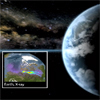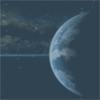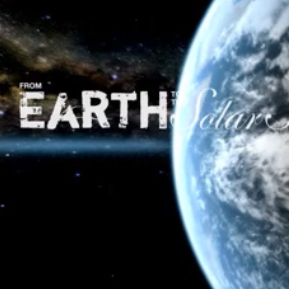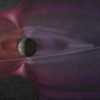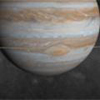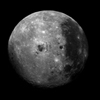CXC Home | Search | Help | Image Use Policy | Latest Images | Privacy | Accessibility | Glossary | Q&A
1. Learn About Solar System
QuicktimeMPEG Audio Only
One star, eight planets, and a myriad of moons, comets and asteroids. This is the Earth's local neighborhood, known as the Solar System.
Despite studying this system for centuries, astronomers still yearn to know much more.
NASA's Chandra X-ray Observatory is providing new insight in uncovering new mysteries about objects of all sizes and across distances throughout our Solar System.
See the Solar System through Chandra's eyes.
[Runtime: 01.31]
(NASA/CXC/A. Hobart)
QuicktimeMPEG Audio Only
- Audio (485.4 kb)
One star, eight planets, and a myriad of moons, comets and asteroids. This is the Earth's local neighborhood, known as the Solar System.
Despite studying this system for centuries, astronomers still yearn to know much more.
NASA's Chandra X-ray Observatory is providing new insight in uncovering new mysteries about objects of all sizes and across distances throughout our Solar System.
See the Solar System through Chandra's eyes.
[Runtime: 01.31]
(NASA/CXC/A. Hobart)
2. The Solar System in a Whole New Light
QuicktimeMPEG With closed-captions (at YouTube)
One Star, eight planets, and a myriad of moons, comets, and asteroids. This is the Earth's local neighborhood known as the Solar System. Despite studying this system for centuries, astronomers still yearn to know much more. NASA's Chandra X-ray Observatory is providing new insight and uncovering new mysteries about objects of all sizes and across distances throughout our Solary System.
[Runtime: 1.31]
(Animations: NASA, ESA/Hubble/M. Kornmesser & L.L. Christensen, NASA/GFSC/G. Shirah, J. Tucciarone. Production: NASA/CXC/K.K. Arcand & A. Hobart with thanks to SPL. Music: Move Two)
QuicktimeMPEG With closed-captions (at YouTube)
One Star, eight planets, and a myriad of moons, comets, and asteroids. This is the Earth's local neighborhood known as the Solar System. Despite studying this system for centuries, astronomers still yearn to know much more. NASA's Chandra X-ray Observatory is providing new insight and uncovering new mysteries about objects of all sizes and across distances throughout our Solary System.
[Runtime: 1.31]
(Animations: NASA, ESA/Hubble/M. Kornmesser & L.L. Christensen, NASA/GFSC/G. Shirah, J. Tucciarone. Production: NASA/CXC/K.K. Arcand & A. Hobart with thanks to SPL. Music: Move Two)
3. From Earth to the Solar System Image Collection
QuicktimeMPEG With closed-captions (at YouTube)
The Solar System is much more than a collection of planets, moons, comets, and asteroids. It is our home in the cosmos. The Solar System's only star, which we call the Sun, plays a role in nearly every aspect of our cosmic neighborhood. The 8 planets, including Earth, all revolve around the Sun. No two planets are alike. There are hundreds of moons in our Solar System, many are intriguing worlds waiting to be explored. Comets are Solar System interlopers, bringing information from the very edge of the Solar System. Our Solar System resides in a spiral arm of the Milky Way Galaxy, where our Sun is one among billions of other stars. The search for evidence of life, past and maybe even present, is the study of astrobiology. From Earth to the Solar System (FETTSS) provides a few snapshots of the wonders contained within this unique system, the likes of which we have yet to discover anywhere else in the Universe. http://www.facebook.com /fettss
[Runtime: 06:32]
(Production: NASA/CXC/SAO/A.Hobart & K.Arcand)
QuicktimeMPEG With closed-captions (at YouTube)
The Solar System is much more than a collection of planets, moons, comets, and asteroids. It is our home in the cosmos. The Solar System's only star, which we call the Sun, plays a role in nearly every aspect of our cosmic neighborhood. The 8 planets, including Earth, all revolve around the Sun. No two planets are alike. There are hundreds of moons in our Solar System, many are intriguing worlds waiting to be explored. Comets are Solar System interlopers, bringing information from the very edge of the Solar System. Our Solar System resides in a spiral arm of the Milky Way Galaxy, where our Sun is one among billions of other stars. The search for evidence of life, past and maybe even present, is the study of astrobiology. From Earth to the Solar System (FETTSS) provides a few snapshots of the wonders contained within this unique system, the likes of which we have yet to discover anywhere else in the Universe. http://www.facebook.com /fettss
[Runtime: 06:32]
(Production: NASA/CXC/SAO/A.Hobart & K.Arcand)
4. New Horizons Path Past Jupiter
QuicktimeMPEG On February 28, 2007, the New Horizons spacecraft made its closest approach to Jupiter on its ultimate journey toward Pluto. Its unusual trajectory took New Horizons down Jupiter's so-called magnetotail, or magnetic tail, a region where no spacecraft has gone before.
[Runtime: 0.13]
(NASA/JHUAPL/SwRI)
Related Chandra Images:
QuicktimeMPEG On February 28, 2007, the New Horizons spacecraft made its closest approach to Jupiter on its ultimate journey toward Pluto. Its unusual trajectory took New Horizons down Jupiter's so-called magnetotail, or magnetic tail, a region where no spacecraft has gone before.
[Runtime: 0.13]
(NASA/JHUAPL/SwRI)
Related Chandra Images:
- Photo Album: Jupiter
5. Jupiter's Aurora Animation
QuicktimeMPEG Powerful auroras have been observed near the poles of Jupiter. These auroras are thought to be caused by the interaction of sulfur and oxygen ions in the outer regions of the Jovian magnetic field, some of which originates in Io's volcanoes, with particles flowing away from the Sun in the so-called solar wind.
[Runtime: 0.14]
(NASA/JHUAPL/SwRI)
Related Chandra Images:
QuicktimeMPEG Powerful auroras have been observed near the poles of Jupiter. These auroras are thought to be caused by the interaction of sulfur and oxygen ions in the outer regions of the Jovian magnetic field, some of which originates in Io's volcanoes, with particles flowing away from the Sun in the so-called solar wind.
[Runtime: 0.14]
(NASA/JHUAPL/SwRI)
Related Chandra Images:
- Photo Album: Jupiter
6. Scale Chandra Images to Full Moon
QuicktimeMPEG This survey, taken in a region of the Bootes constellation, involved 126 separate Chandra exposures of 5,000-seconds each, making it the largest contiguous field ever obtained by the observatory. At 9.3 square degrees, it is over 40 times larger than the full moon seen on the night sky, which is shown in this graphic for scale.
[Runtime: 0:12]
(X-ray: NASA/CXC/CfA/R.Hickox et al.; Moon: NASA/JPL)
Related Chandra Images:
QuicktimeMPEG This survey, taken in a region of the Bootes constellation, involved 126 separate Chandra exposures of 5,000-seconds each, making it the largest contiguous field ever obtained by the observatory. At 9.3 square degrees, it is over 40 times larger than the full moon seen on the night sky, which is shown in this graphic for scale.
[Runtime: 0:12]
(X-ray: NASA/CXC/CfA/R.Hickox et al.; Moon: NASA/JPL)
Related Chandra Images:
- Photo Album: Bootes Field


